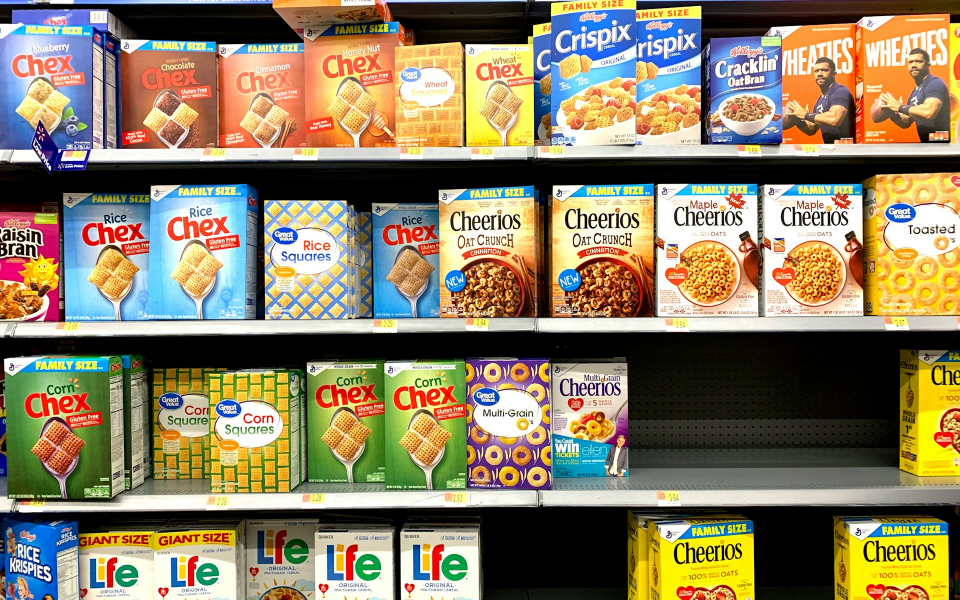Goldman Sachs analyst Leah Jordan initiated coverage of the packaged food sector. The analyst writes that growth in the sector has slowed following the Covid demand surge and inflation, but some companies are undervalued near historic lows.
The analyst expects food-at-home spending to grow at a low-single-digit rate, supported by both volume and pricing due to strong consumer cash flow.
Jordan initiated coverage on ConAgra Brands, Inc.
The analyst views CAG favorably due to its strong frozen and snack portfolio aligned with convenience trends, offering better-than-expected results and the highest free cash flow yield in the coverage. The company's transformation, including the Pinnacle Foods acquisition and process overhaul, has been underappreciated by investors, particularly given the Covid-related market shifts, writes the analyst.
For FY25-27, the analyst estimates EPS of $2.67, $2.78, and $2.89 vs. the consensus (FactSet) of $2.61, $2.70, and $2.82, respectively, reflecting a more optimistic outlook on volume and mix trends.
The analyst initiated coverage on General Mills, Inc.
GIS' diverse portfolio aligns with current trends, has less private label risk than feared, and demonstrates stronger margins compared to peers, writes the analyst. The analyst forecasts stable gross margins for GIS, with gradual improvement supported by moderating input cost inflation and ongoing productivity gains.
For FY25-27, Jordan projects EPS of $4.55, $4.75, and $4.95, compared to the consensus (FactSet) of $4.50, $4.73, and $4.94, respectively.
Jordan initiated coverage on Kellanova
The spin-off of its North American cereal business has enhanced growth and margins. While strong earnings are expected from its brand strength and emerging market exposure, takeover speculation has dampened investor sentiment, says the analyst.
For FY24-26, Jordan estimates EPS of $3.80, $3.97, and $4.21 compared to the consensus (FactSet) of $3.70, $3.89, and $4.10, respectively.
Moreover, the analyst started coverage of Mondelez International, Inc.
The analyst writes that MDLZ is seen as a high-quality investment with strong growth potential, driven by organic opportunities and emerging market exposure. Recent stock underperformance has been linked to market share losses and higher U.S. biscuit pricing pressures, but trends are improving, and the company is actively addressing these challenges.
For FY24-26, EPS estimates were $3.52/$3.70/$3.95 above the consensus (FactSet) of $3.50/$3.67/$3.94.
On the other hand, the analyst started coverage on The Hershey Company
The analyst sees risks of estimate revisions and valuation compression for HSY due to ongoing market share losses to both private label and premium products, a potential slowdown in impulse spending, and fewer holiday shopping days. However, the analyst writes that HSY's strong portfolio of industry-leading sweet and salty brands positions it well in the long term.
For FY24-26, the analyst anticipates EPS of $9.39/$9.10/$9.86 below the consensus (FactSet) of $9.54/$9.52/$10.29, reflecting a weaker demand and margin outlook for confectionery business, market share losses, and expected higher promotional activity and input costs.
Also, the analyst initiated coverage of The Kraft Heinz Company
The analyst says that KHC's turnaround is likely to be slower and more challenging than expected due to high private label risks and mixed brand positioning. The company faces the task of reinvesting in its assets and brands after past cost-cutting damaged core assets, adds the analyst.
For FY24-26, the analyst estimates EPS of $2.97, $3.04, and $3.20, below the consensus (FactSet) of $3.03, $3.18, and $3.35, due to a weaker North American outlook, increased promotional pressure from high private label risk, and prior underinvestment.










